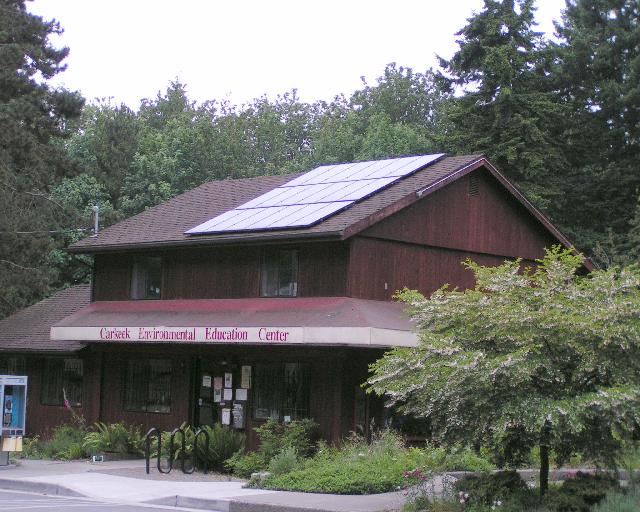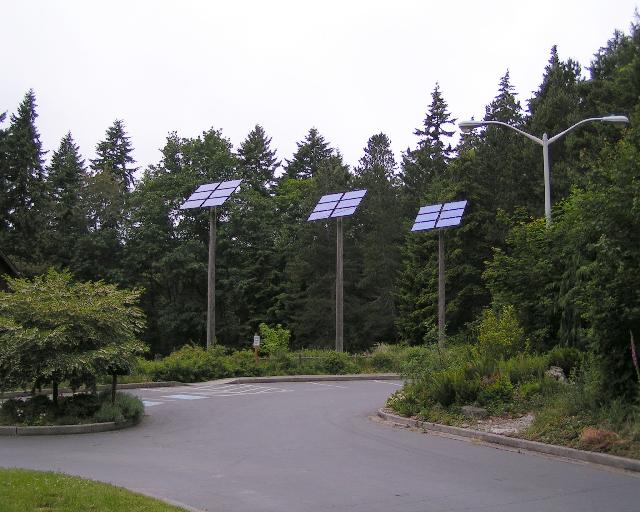I took these pictures of a solar installation at the Carkeek Environmental Education Center in 2005. This installation provides 3.6 Kw of peak power and provides for about 50% of this buildings energy needs.

I was recently contacted for permission to publish the following photograph in a book dealing with the subject of sustainable energy. The reason the author was interested in this particular photo is that it dispels many of the current myths regarding solar energy.
For example, it is often said that solar energy can only work in areas that receive a lot of sunlight such as southern California, Arizona, New Mexico, or Nevada. This installation is in Seattle Washington, only about one hundred miles south of the Canadian border, and Seattle has the distinction of being the US city that receives the least sunshine in a year. Even with these handicaps, this installation generates half of the energy requirements of this building.

Another commonly held belief is that a solar installation requires defoliation to provide adequate exposure to the panels. This installation is surrounded by lush plant life.
Silicon solar panels are expensive, presently around $5/peak watt for small to medium sized installations, but silicon solar cells are extremely stable and last virtually forever so your initial investment will generate returns for decades. After about five years silicon solar cell output typically declines by about 10%, remaining constant after that. You will want to take this into consideration when you size your solar array.
If you are a do-it-yourself and willing to build your own panels, very reasonably priced solar cells can often be obtained through E-bay or surplus electronics dealers.
